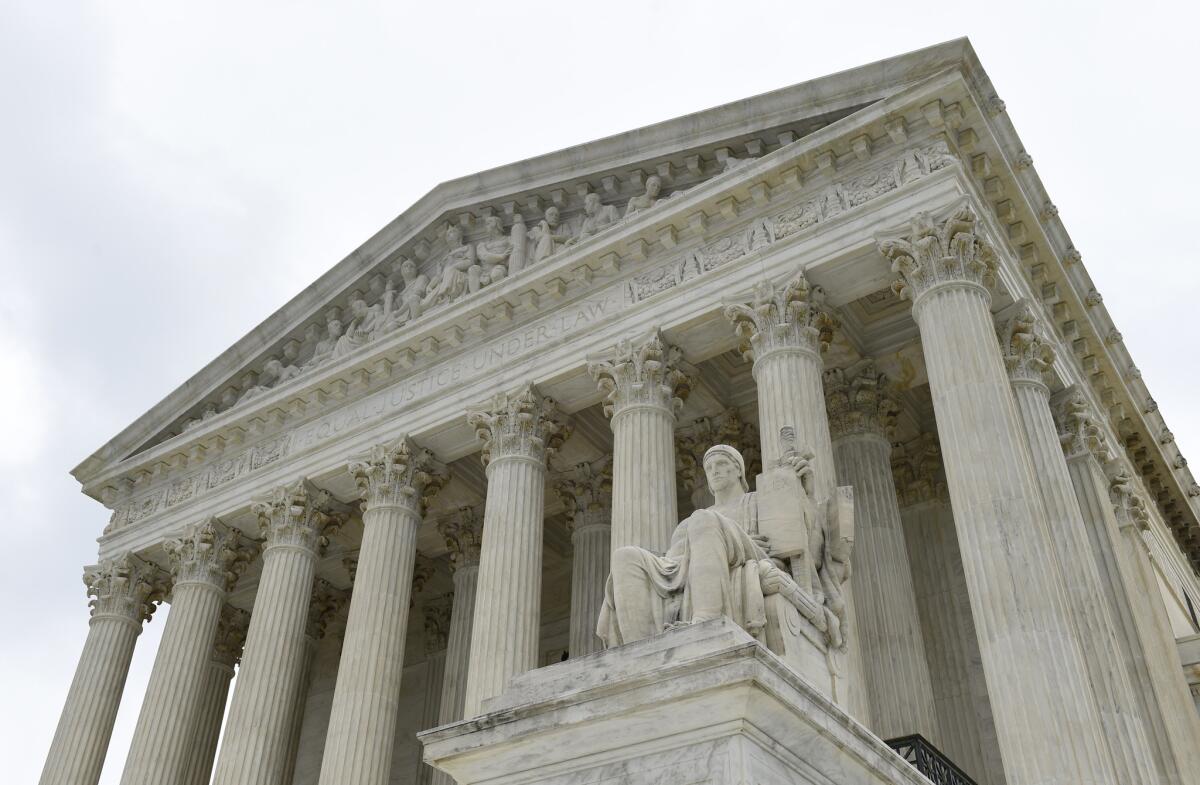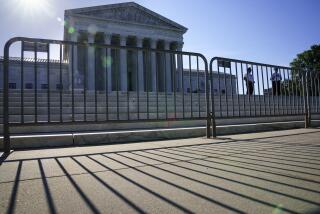Op-Ed: The Supreme Court’s supremely flawed record

- Share via
As a constitutional law professor, I have mixed feelings about the first Monday in October. On the one hand, I look forward to the start of the new Supreme Court term in the same way a baseball fan looks forward to opening day. But I also dread what the court might do.
Historically, for all the celebrated cases in which the Supreme Court has affirmed the liberties and rights promised by the Constitution, it has at least as often ruled in favor of government power against injured individuals; in favor of business against employees and consumers.
In its last term, for example, the court significantly expanded police power by holding that the police can stop a car based solely on an anonymous tip that the vehicle was driving erratically.
The court’s last session also weakened federal campaign finance laws once again, and enhanced the political influence of the rich by striking down limits on how much a person can contribute to candidates for federal office or political parties. And the court greatly weakened the wall separating church and state, by allowing a town board to have prayers before its meetings, even though they were delivered almost exclusively by Christian clergy.
I wish I could say that last year was an aberration. But, over the course of American history, the court has repeatedly failed at its most important tasks and at the most important times. As much as we might like to think of the court as an evenhanded dispenser of justice, it often is not. For the first 78 years of American history, until the ratification of the 13th Amendment in 1865, for example, the court consistently sided with slave owners and aggressively enforced the institution of slavery. For 58 years, from 1896 until 1954, the court embraced the noxious doctrine of “separate but equal” and upheld Jim Crow laws that segregated the races in every aspect of Southern life.
Citizens think of the nation’s highest court as the last resort for the individual, but the Supreme Court has continually failed to stand up to majoritarian pressures in times of crisis. During World War I, individuals were imprisoned for speech that criticized the draft and the war without the slightest evidence that the expression had any adverse effect on military recruitment or the war effort. During World War II, 110,000 Japanese Americans were uprooted from their homes and placed in what President Franklin Roosevelt referred to as concentration camps. During the McCarthy era, people were imprisoned simply for teaching works by Marx. In all of these instances, the court ruled in favor of the government and erred by failing to enforce the basic constitutional guarantees of freedom of speech and equal protection.
Given the court’s tendencies, here are some of the pending cases that worry me this term. In Young vs. United Parcel Service, the court will consider whether the federal Pregnancy Discrimination Act requires companies to accommodate a pregnant woman’s need to limit the weight of the boxes she lifts. In Alabama Legislative Black Caucus vs. Alabama, and Alabama Democratic Conference vs. Alabama, the court will return to the issue of race and voting and consider whether the intentional creation of largely black districts violates the rights of African American voters by diluting their voting strength. The court also will likely decide whether those who buy insurance on exchanges created by the federal government are entitled to tax credits, a ruling with the potential to greatly weaken the Affordable Care Act.
Given the court’s recent history in weakening protections against discrimination in employment and voting, there is every reason to worry what it might do in these cases.
None of this is to say I am entirely pessimistic about the new session. It seems quite possible that this year the court will finally rule that state laws preventing same-sex marriage violate the Constitution.
Still, the Supreme Court’s repeated historical and contemporary failures convince me that it needs to be reformed if it is to truly fulfill its constitutional role. Indeed, many reforms might well garner bipartisan support, including instituting merit selection of Supreme Court justices, in which presidents appoint bipartisan merit selection committees and agree to pick from their recommendations. Other reforms might include creating a more meaningful confirmation process, establishing term limits for justices, making the court more transparent (including televising its proceedings) and making the justices comply with the same ethics rules that other federal judges must obey.
The first Monday in October is an occasion for looking ahead at the coming term, but it also is a chance to reflect on the court’s recent and historical performance. It can do much, much better.
Erwin Chemerinsky is the dean of the UC Irvine School of Law and author of “The Case Against the Supreme Court.”
Follow the Opinion section on Twitter @latimesopinion
More to Read
A cure for the common opinion
Get thought-provoking perspectives with our weekly newsletter.
You may occasionally receive promotional content from the Los Angeles Times.










